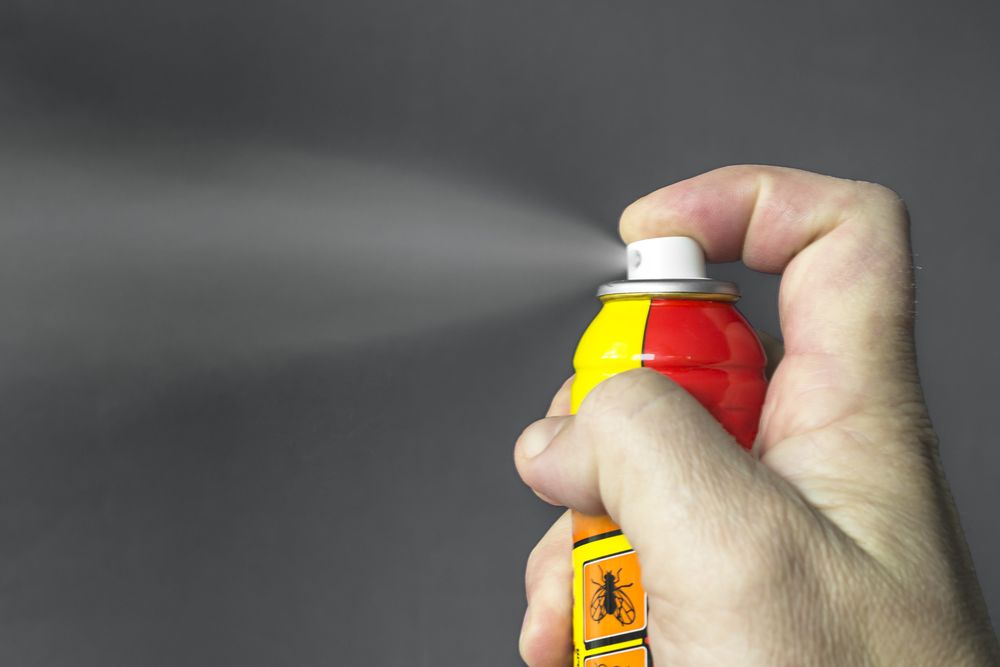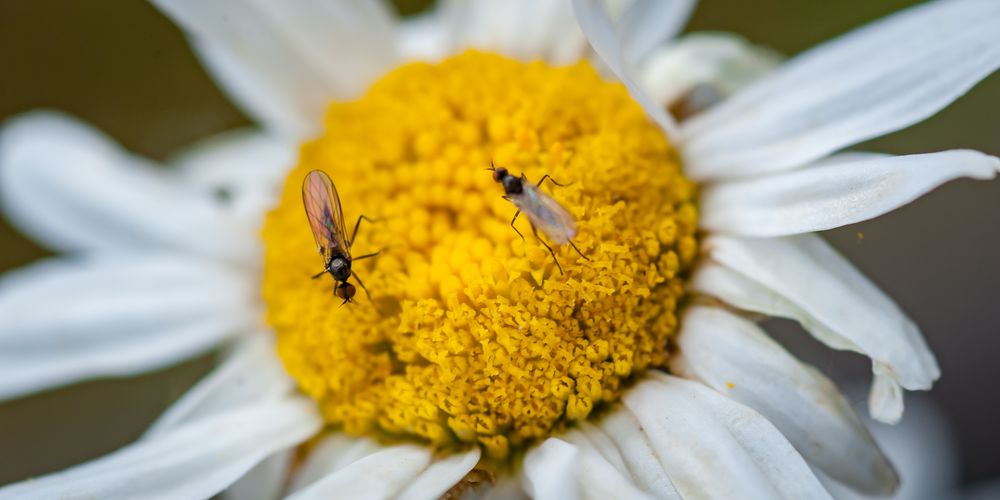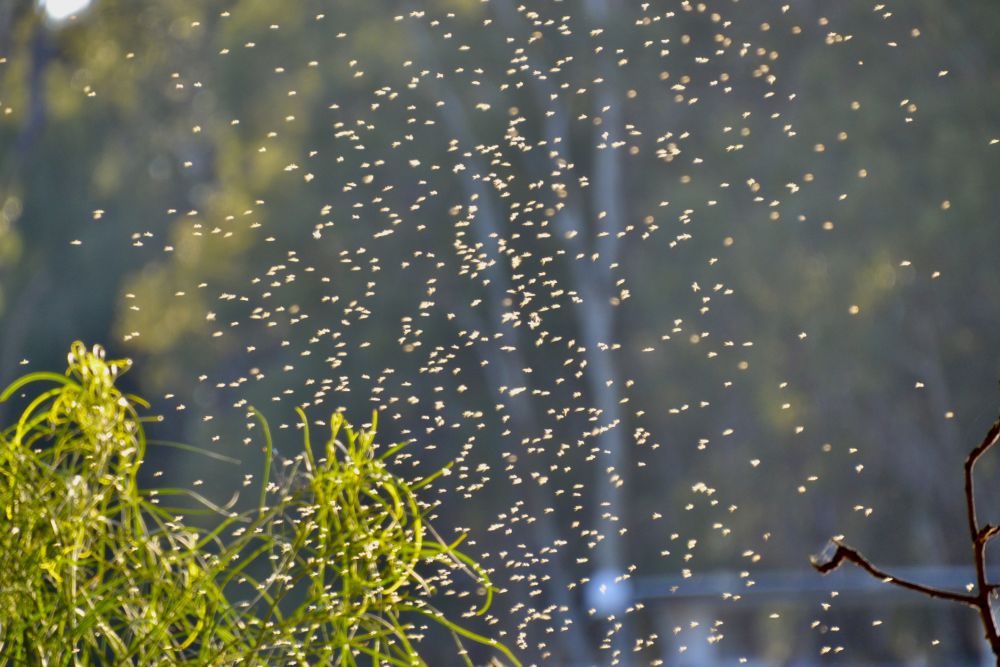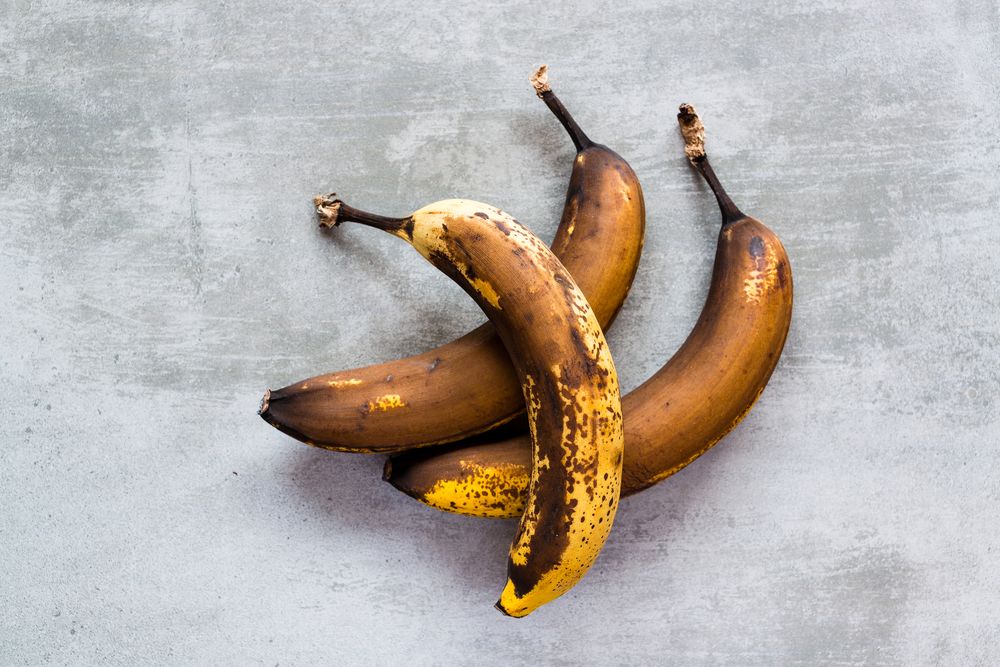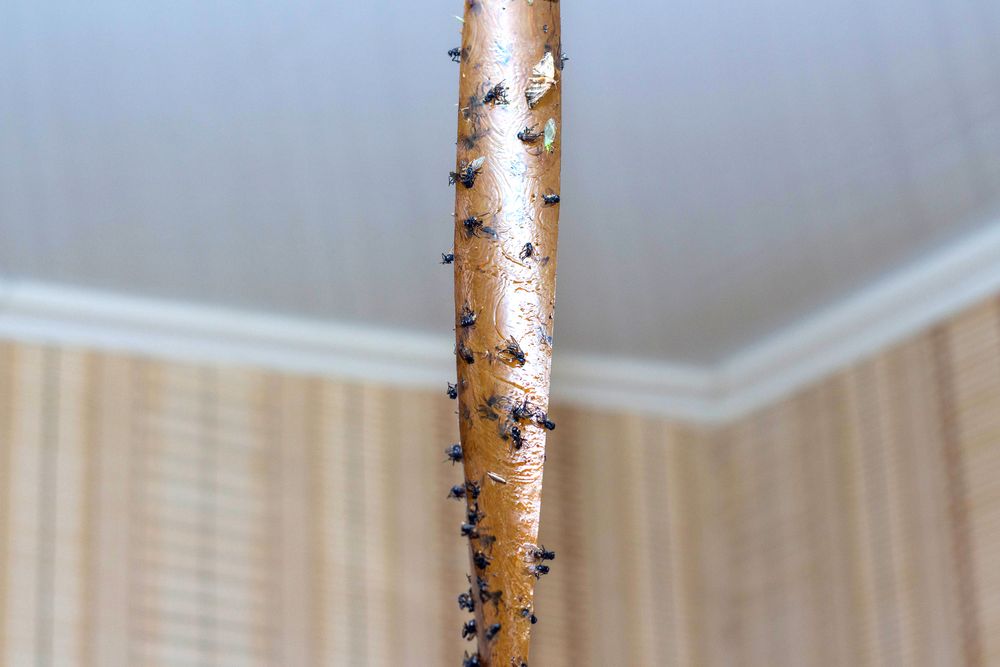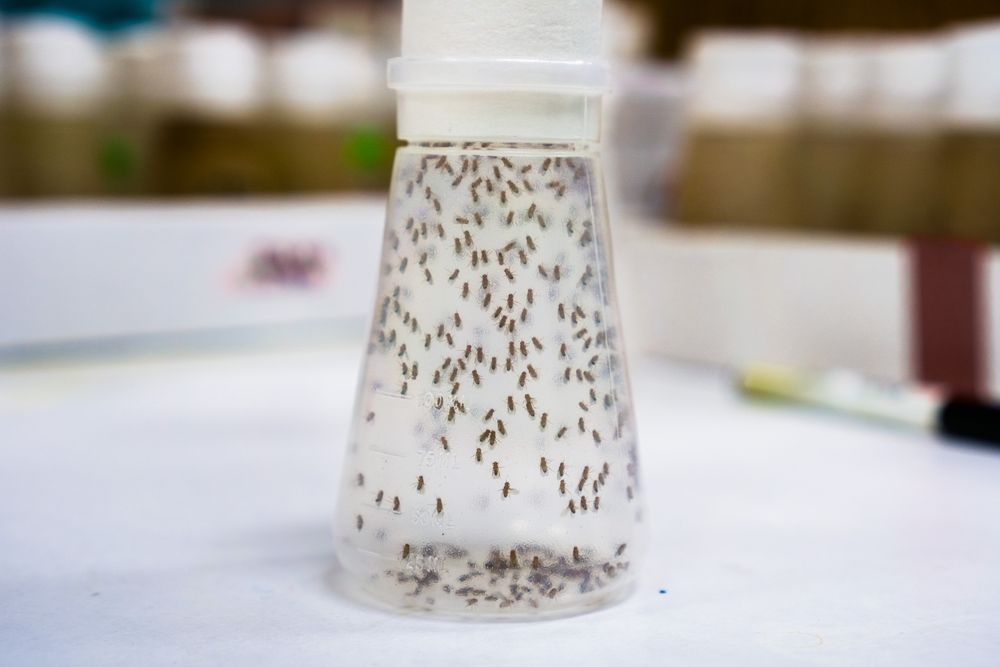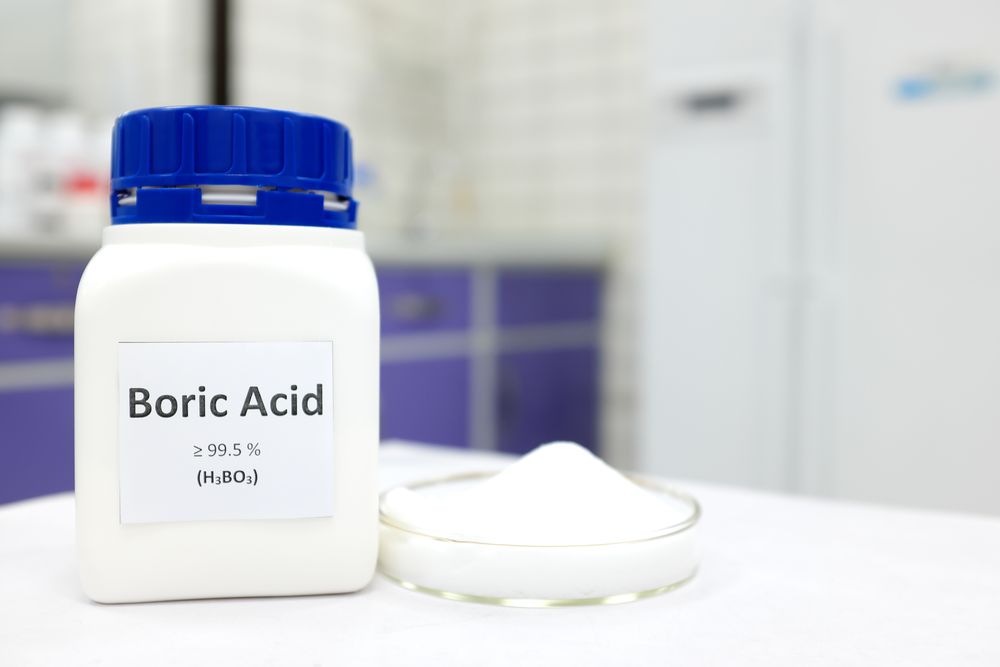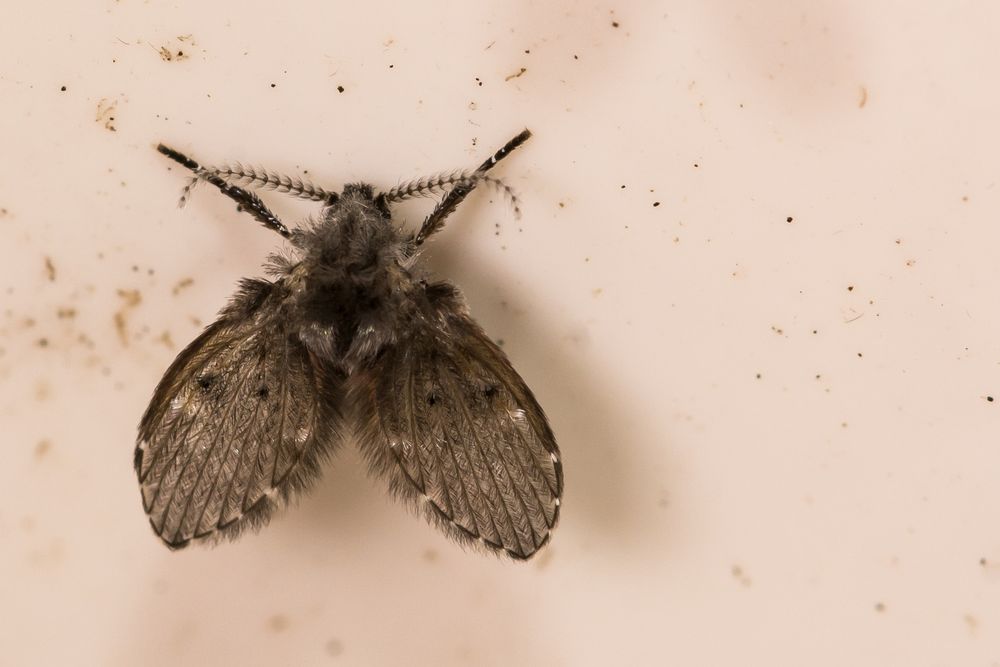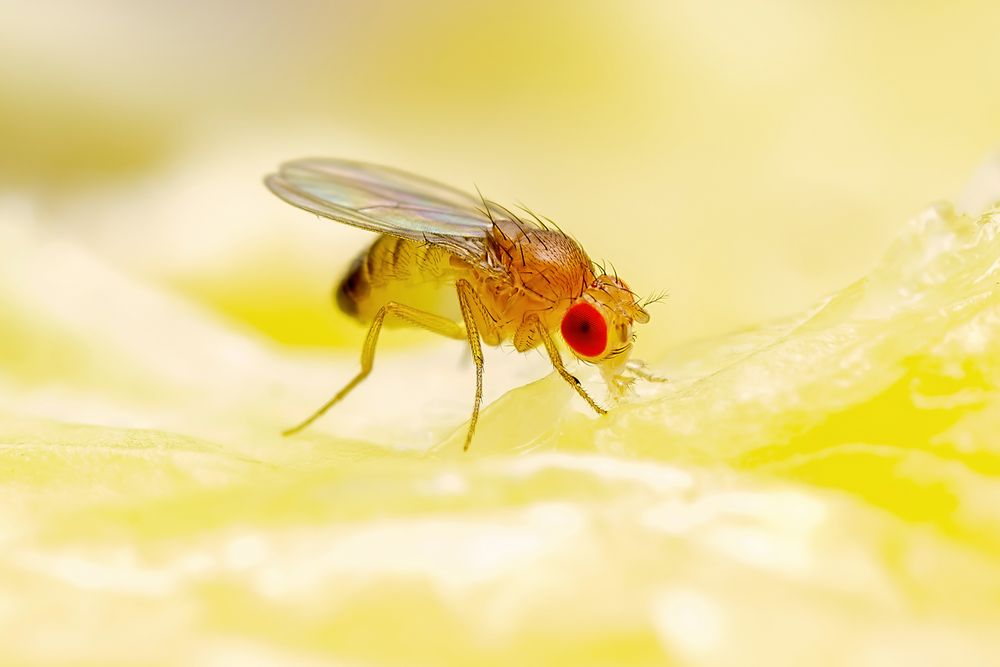How to Get Rid of Gnats and Eliminate Those Pesky Insects for Good
Gnats are pesky little creatures that can ruin any outdoor activity. But don’t worry, you can learn how to get rid of gnats by checking out our intuitive guide.
Gnat infestation is a common problem during the summer months. They are tiny, black bugs that can be seen flying around. Gnats can be a nuisance because they tend to swarm around your head and bite you. They can also get into your food and drink.
The best way to get rid of gnats is to find the source of the infestation and treat it at its core. This may involve using a combination of different methods, such as traps, repellents, and pesticides.
Many people wonder how to kill gnats using natural remedies instead of chemical solutions that might be toxic to humans, pets, and plants. If you catch the infestation early, you may be able to treat it before it becomes too severe.
Table of Contents
What Are Gnats?
Gnats are tiny, flying insects that can be a nuisance to people and animals. There are three popular types of gnats:
- Fruit flies are attracted to fruit and vegetables that are ripe, rotting, or decaying. You can also find them around dirty dishes, open alcohol bottles, and trash bags with spoiled food. They are common in the summer.
- Fungus gnats can be noticed hovering around your plants indoors or outdoors. They lay their eggs in the soil.
- Drain flies live in sewers, drains, and septic tanks, and they lay their eggs there. You can also have gnats in the bathroom. It’s possible to tell them apart by their slightly larger wings and hairy bodies.
Gnat Characteristics
These insects are about 1/8 of an inch (3.18 mm) long and have a thin, black body. However, they may exhibit shades of orange, brown, or dark green, depending on species and age.
Gnats have large eyes and a long proboscis, or snout, which they use to suck sap from plants. The wings are hairier than those of other flies, so they form a fringe on their edge when they are at rest.
The mouthparts are often mistaken for stings or bites by humans because they look similar to bee stings or mosquito bites. However, gnat bites do not hurt much more than a mosquito bite.
Where Do Gnats Come From?
Gnats live in warm climates near bodies of water such as lakes, ponds, riverbanks, or even large puddles. They can also live near moist areas such as sewers and drains. Populations of gnats increase during the summer due to higher temperatures and moisture levels that allow them to grow more quickly than usual.
There are several types of gnats, and most species live for 1 to 2 months. Females lay around 200 eggs each week during their lifespan. The eggs take about 2 days to develop into larvae, which feed on organic material or fungi before turning into adults after 10 to 20 days.
How to Get Rid of Gnats in House
If you’re wondering how to get rid of gnats inside the house, there are a few solutions you can try:
- Eliminate the moist environments where they live and breed. This can be done by fixing plumbing leaks, repairing screens on windows and doors, and using fans or dehumidifiers to dry out the area.
- Use insecticides. Many different types of insecticides are available, but it is important to read the label and follow the instructions carefully. It is also important to wear gloves and protective clothing when applying insecticides.
- Use traps. You can find and use various gnat traps for pest control, but most work by using a bait that attracts the insects and then trapping them in a small area.
- Flush drains with bleach. Mix half a cup of bleach with a gallon of water, slowly pour the contents down the drain and flush with hot water for several minutes. Repeat this process until you no longer notice drain flies.
- Use flypaper. It contains a sticky substance that traps the gnats when they land on it. The method is effective but far from appealing since you will have sticky paper that hangs in your home; you and your family risk touching it by accident.
- Try a bug zapper. It’s not the most effective solution out there since a bug zapper usually works with larger insects, like mosquitoes. But it’s still worth a shot. You can buy this kind of device from online shops like Amazon.
- Seal up gaps around the windows and doors of your house to prevent gnats from getting inside.
- Clean up food spills immediately, remove rotting fruit and vegetables from your house, cover or seal uncovered food containers, and store food in the refrigerator or freezer.
- Use a sealed trash can to get rid of garbage.
Gnats can carry diseases such as dysentery, cholera, and malaria, so you should follow proper hand-washing procedures after handling them.
Home Remedies to Get Rid of Gnats
If you want to be more eco-friendly and avoid using insecticides, try these home remedies as gnat killers:
Boric Acid
- Gather the following supplies:
- Spray bottle
- 2 tablespoons of boric acid powder
- 1 tablespoon of sugar
- 1 cup of water
- Mix all ingredients in a spray bottle and use as needed.
- This DIY gnat trap will be most effective at night when the bugs are out and about looking for food.
- Spray it near your windows or doorways where they tend to gather.
- Gnats will fly into the mixture, but they won’t be able to get out again.
Don’t use boric acid near small children or pets that may accidentally ingest the solution. If you have a dog or a cat, you can place the mixture in a jar with holes punched in the top to let the gnats fly inside but not back out.
You can make this repellent last longer by storing it in your refrigerator.
White Vinegar Trap
If you’re wondering how to get rid of house flies with vinegar, this is what you have to do:
- Collect the following supplies:
- 1 cup of white vinegar
- 2 tablespoons of sugar
- A clear jar with a lid
- Mix all ingredients in a clear jar with a lid and use it as needed.
- After about an hour after application, pour the contents of the jar down the drain along with some water, so they don’t dry up too quickly.
This homemade gnat trap is somewhat effective against gnats and similar to boric acid, except that you can keep it inside your home because it will not kill any insects that are trapped.
However, you shouldn’t use white vinegar on plants with open cuts since it can sting them. Another downside is that it may take up to a week to observe its full effects.
Apple Cider Vinegar Gnat Trap
- Gather these items:
- A large glass jar with a lid
- Apple cider vinegar
- Dish soap
- Fill the glass about halfway with apple cider vinegar.
- Add some drops of dish soap to the vinegar. It will help to break the surface tension of the vinegar and make it difficult for the gnats to escape.
- Put the lid on the jar and poke a few holes in it with a sharp object like a toothpick or chopstick. The gnats will be able to enter but not get out.
- Place the jar near where you’ve seen the most gnats. You should start seeing them drowning in the vinegar within a day or so.
Keep replacing the vinegar as needed until all the gnats are gone. You can also use this trap outdoors if you’re having trouble with drain flies.
Just pour some vinegar into a bowl and set it near the water you’re trying to control. Apple cider vinegar is a great, non-toxic way to get rid of gnats.
Red Wine Trap
- Have the following items at hand:
- A plastic or glass bottle
- Red wine
- A funnel
- A piece of cloth
- A stick
- Pour the red wine into the bottle.
- Put the funnel at the top of the bottle.
- Put the piece of cloth over the funnel.
- Tie the stick to the cloth so that it forms a seal.
- Place the trap where you want to catch the fruit flies.
The fruit flies will be attracted to the red wine and fly into the bottle. They will get stuck in the cloth when attempting to escape. The trap will then catch the grants, so you can proceed with discarding the trap and insects.
Sticky Tape
- What you need:
- Sticky tape or masking tape
- Scissors
- Place sticky tape near entrances where gnats tend to gather.
Gnats may be attracted to lights at night, so placing a strip of sticky tape next to outdoor lights can help reduce their numbers. You can also place strips of tape inside or just outside your doors overnight for increased effectiveness.
Coffee Grounds Trap
If you keep asking yourself how to get rid of fruit flies and gnats, here’s an effective method:
- Collect these items:
- A container (like a yogurt container or margarine tub)
- A plastic bag
- Coffee grounds
- Sticky tape
- Scissors
- Cut the bottom off of the plastic bag.
- Pour coffee grounds into the bottom of the container.
- Put the plastic bag over the top of the container and push it down, so the coffee grounds are trapped inside.
- Tape the top of the bag to the container.
- Put the trap in an area with gnats. The insects will be attracted to the coffee grounds and will get stuck in the sticky tape when trying to get out.
You can also make a coffee grounds trap by putting the coffee grounds in a small bowl and then putting the bowl inside of a larger container.
The outer bowl should have water inside so the grants can’t get to the coffee grounds. Again, the insects will be attracted to the coffee grounds and drown when trying to escape.
Citrus Trap
- You will need the following for this trap:
- A plastic bottle
- A sharp knife
- A slice of citrus fruit (orange, lemon, grapefruit, etc.)
- Take a plastic bottle and remove the cap.
- Cut off the bottom of the bottle so that it stands on its own.
- Cut a small hole in the side of the bottle and insert the cut end of a piece of citrus fruit.
- The citrus fruit will release its fragrance and attract the mosquitoes.
Sugar Trap
- What you need:
- A bucket
- Plastic wrap
- A cup of sugar
- Water
- Line a bucket with an old piece of plastic wrap.
- Pour enough water to cover the bottom of the bucket.
- Add one cup of sugar and stir until dissolved.
- Punch or poke holes in the top of the plastic wrap so that gnats can enter.
- Let the trap sit overnight before checking it.
Ripe Fruit Trap
If you’re wondering how to get rid of gnats in your house, here’s what you can do:
- For this trap, you need:
- Any ripe fruit or vegetable
- A bowl
- Plastic wrap
- Place the fruit or vegetable in a bowl.
- Cover the bowl with plastic wrap.
- Poke small holes in the plastic to allow gnats to fly through.
The insects will be attracted to their favorite food, but they will not be able to escape the sealed bowl. Evidently, this won’t kill the bugs, so you still have to dispose of them.
How to Get Rid of Gnats in Plants
If you’re asking yourself how to get rid of gnats in house
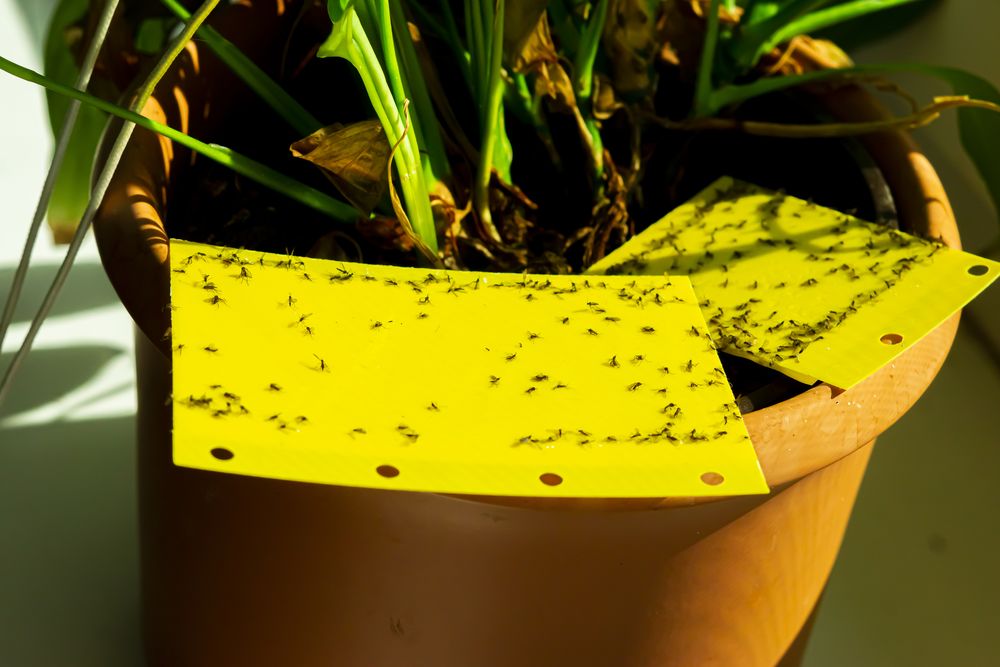
- Put a little bit of vinegar or soap water in a dish and place it near the plant. The gnats will fly into the liquid and drown.
- You can also try using a commercial insecticide or an organic method like a garlic and water mixture.
- Another option is to use a sticky trap, like the type you would use for fruit flies.
- Spray the plant with insecticidal soap. Be sure to follow the directions on the product carefully.
- Use neem oil. It’s a natural pesticide extracted from the neem tree and effective against many insects. Plus, it’s non-toxic to pets and humans. But, just like vinegar, it may take a week to fully take effect.
- Plant basil near your houseplants. It helps deter insects like gnats, mosquitos, and flies.
- Light citronella candles. It’s a popular choice for keeping bugs away, and they work by releasing a scent that is disliked by most insects, including gnats.
- Use bay leaves. They are a natural repellent for different insects, such as gnats. You can place them near your plants or rub them directly on your skin to keep bugs away.
- Use horticultural oils. They coat the insect’s body and suffocate it. Horticultural oils are effective against gnats and can be used on both indoor and outdoor plants. But they can damage the plant if used in high concentrations, so it’s best to test a small area first.
- Avoid overwatering your plants since the moisture will attract gnats.
How to Get Rid of Gnats Outside
Getting rid of gnats outside can be challenging because it depends on the gnat type: fungus gnats or drain flies (also known as moth flies). Here’s how to identify them.
Fungus Gnat Life Cycle
- The adult female fungus gnat lays eggs on top of moist soil in your yard.
- Once the eggs hatch, the larvae begin feeding on fungi and decaying plant matter in the soil. They feed for several weeks before digging deeper into the ground, where they build silk cocoons around themselves and turn into pupae.
- After about one week, new adults emerge from these pupae and move back up to surface level to lay more eggs. There’s no resting stage in the life cycle of a fungus gnat.
How to Remove Fung Gnats
- Remove any moisture-retaining material near your house, like mulch or compost.
- Reduce the amount of water you’re using in your garden.
- Repot houseplants in soil that drains well.
- Apply a fungicide to the soil of outdoor plants to kill the larvae.
- Use a trap like the vinegar and soap water dish near the plants.
Drain Fly Life Cycle
- Adult drain flies lay their eggs on the surface of decomposing organic matter, like sewage or sludge.
- The eggs hatch and the larvae begin to feed on the organic matter. They will molt (shed their skin) several times as they grow.
- Once the larvae are mature, they will form pupae inside cocoons and remain in this stage for about two weeks.
- New adult flies emerge and start the life cycle over again.
How to Remove Drain Flies
- Remove any organic matter that is decomposing in your yard.
- Cover drains and filters with mesh screens to prevent flies from entering.
- Apply an insecticide to the affected areas.
- Use a sticky trap to catch adult flies.
More Ways to Kill Gnats Outside
Here are more ways to kill gnats outside:
1. Introduce Predators or Parasites
Introducing predators or parasites is another way of getting rid of an insect infestation. For example, you can add praying mantises, ladybugs, or lacewings, which are natural predators of aphids and can help keep other insects in your yard at bay. Basically, you’re creating an ecosystem that allows the good bugs to eat the bad bugs!
It’s also possible to introduce parasites (such as nematodes) to kill the insects indirectly by attacking their larvae or eggs. People can buy these beneficial bugs from a variety of places or just let them come into the yard on their own. However, this is best done during warm weather when it’s easier for these creatures to fly and find insects.
The downside to this method is that it often takes longer for the predator or parasite to become established and start working, and you may need to repeat the process a few times. On top of that, it’s not very effective in cold climates where most of the season is too cold for them to survive and breed.
2. Use Pyrethrum
Pyrethrum is a natural insecticide made from the chrysanthemum flower. It works by disrupting the insect’s nervous system, which eventually kills it. Pyrethrum is effective against a wide variety of insects and can be used on both indoor and outdoor plants.
The downside to using pyrethrum is that it can be toxic to pets and humans, so it’s important to read the instructions carefully before applying it.
3. Use Hand-Held Vacuums
Hand-held vacuums suck the insects up into the vacuum cleaner. This is one of the most immediate ways to kill insects outside because you don’t have to resort to insecticides or traps.
You can even set up a hand-held vacuum so that it catches and kills several different kinds of bugs at a time, such as gnats and flies. However, these gadgets only kill the insects they catch, so you will probably still have some around – it’s not a way to get to the root of the problem.
On top of that, hand-held vacuums do not solve all kinds of insect problems, and some homeowners may be allergic to using vacuum cleaners on their property.
4. Grow Marigolds
Marigolds produce a natural insecticide that deters many different kinds of bugs, including gnats. You can plant these flowers near the plants you’re trying to protect or add a few drops of the oil to your garden’s water supply. Just be patient since it may take a while to notice any significant improvements.
5. Use Hydrogen Peroxide
Hydrogen peroxide is a relatively safe, non-toxic substance. You can mix it with water to use as an outdoor spray against insects like fungus gnats and fruit flies.
The dosage is about one part hydrogen peroxide to four parts water. Use this gnat spray in your yard and on your patio, and repeat this for several days until you start to notice improvements.
6. Plant Mint and Basil
Mint and basil are natural insect repellents that you can plant around your garden to keep bugs at bay. Besides, you can cut off leaves whenever you need cooking ingredients.
They also look nice around the yard since they are attractive plants for any landscape design. And you can grow mint and basil in pots to keep them inside your house and prevent gnats from entering through the windows.
7. Use a Garlic Oil or Paste
Garlic is another natural insecticide commonly used on indoor plants. But you can also grow garlic outdoors to keep certain bugs away from your garden plants, such as gnats.
You can directly spray garlic oil or paste on the plants, and it will work to repel insects like aphids, whiteflies, and spider mites. However, garlic can also be harmful to some plants, so it’s best to test it out in a small area to make sure that it doesn’t damage your garden.
8. Clean Up Yard Debris
One of the most common reasons for an insect infestation is that there is too much debris in your yard. This can provide a place for insects to live and breed, which will only make the problem worse.
So, take some time to clean up your yard by getting rid of any old tools, toys, or even furniture you don’t need any longer. Then, mow the grass regularly to keep it under control.
You can also install birdhouses to attract birds, which will eat any insects in your yard. Another good idea is to add lime to the soil to discourage breeding.
9. Use Insect Traps
If you prefer using traps than chemicals around your plants and flowers, there are plenty of options available. You can buy sticky traps, moats, and boxes with lures.
Sticky traps are a great way to attract and trap flies in one place so you can dispose of them when they become filled with bugs.
Moats create a larger surface area for insects to land on while discouraging gnats from reaching your plants; they make a barrier between the soil and plant leaves.
Meanwhile, boxes with lures will give your plants a scent that attracts pests like fungus gnats.
10. Keep Plants Healthy
It’s vital to ensure that your plants are healthy before they get infested with any pest because most insects will need water or food from their host plant to survive. So if your plants look dry or damaged due to disease, they are more likely to become infested with pests.
Water your plants regularly and keep a close eye on them for any signs of disease or damage. If you catch an infestation early, you may be able to treat it before it becomes too severe.
FAQ: How to Get Rid of Gnats
Learn more information about gnat infestation and how to handle it.
How to get rid of fruit flies in the house?
To exterminate indoor fruit flies, try using soap, oil, or garlic spray. You can also soak a cotton ball in vinegar and place it near the fruit bowl.
How to get rid of fungus gnats?
To get rid of fungus gnats, you can try using a pyrethrum-based insecticide. You can also use a mixture of hydrogen peroxide and water. And make sure to clean up any yard debris that might be attracting them.
What kind of plants do gnats like?
Fungus gnats are attracted to moist environments, so they will generally be found near water sources or in soil that is wet. They are also drawn to plants that have a lot of fungus on them. So, if you’re having a problem with gnats, make sure to keep your plants healthy and free from disease.
What kind of traps can be used to catch gnats?
If you’re asking yourself what kills gnats, you can use the following types of traps: sticky plates, moats, boxes with lures, red wine, ripe produce, vinegar, sticky tape, coffee grounds, citrus, and sugar.
What is the best plant for repelling gnats?
Mint and basil are excellent natural repellents of gnat flies, which you can plant indoors or outdoors. You can also try growing garlic outdoors to keep gnats away from your flowers and plants.
What are the best home remedies for gnats?
Common home remedies for gnats include using grapefruit leaves, mint, basil, lemon juice, apple cider vinegar, garlic oil spray, and cayenne pepper. Citronella candles are also an excellent gnat repellent.
How to get rid of gnats indoors?
If you’re wondering how to catch gnats inside the house, you can try using a moat or sticky trap. You can also use a vinegar and water mixture to spray on plants. And make sure to keep your house clean and free of any debris that might be attracting them.
Why do I have gnats in my house?
Gnats are attracted to moisture and can find their way into your house through cracks in the walls or windows, as well as through open doors and windows. Flowers and plants are also what attract gnats. And if you have a pet that spends time outdoors, it may bring in gnats from the yard.
How to get rid of gnats without apple cider vinegar?
If you don’t have apple cider vinegar, you can try using a mixture of soap and water. You can also use a pyrethrum-based insecticide to get rid of gnats. And make sure to keep your house clean and free from any debris that might be attracting them.
Final Thoughts on Removing Gnats
Having an infestation of gnats is annoying at best. But if you have pets or young children, it can be dangerous. And unlike flies, most people are afraid of gnats because their bites are incredibly painful.
If you’re dealing with a gnat infestation, fear not – there are several simple solutions for getting rid of them that don’t involve harsh chemicals. So, take a few minutes to read through this article and see which method is best for you. And remember, if the infestation is too severe, it’s always best to call in a professional.
